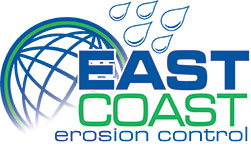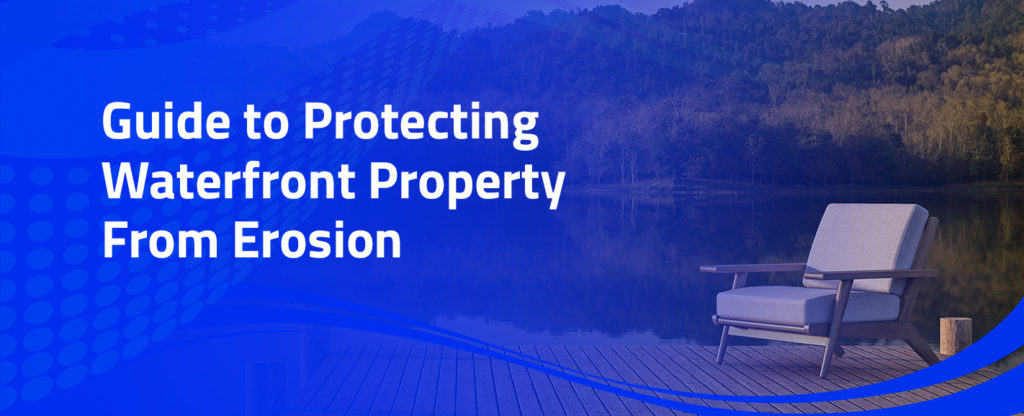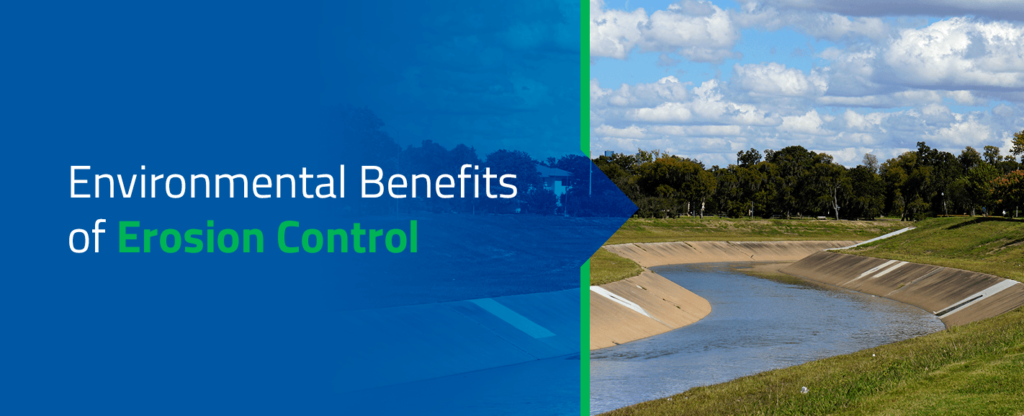Essential Today: Erosion Control Blanket Manufacturing
SHARE
Why Are We Essential
Erosion control products are designed to protect drinking water nationwide.
Water Quality is Essential
In 2002, the United States Environmental Protection Agency (EPA) updated and passed the Clean Water Act (CWA). This regulates and protects U.S. waters from unnecessary contamination due to soil and pollutants. The CWA ensures that soil and pollutants do not enter our waterways, negatively affecting drinking water from coast-to-coast. Erosion control measures are required whenever soil is disturbed on one acre or more on a slope greater than 3:1 (which is a relatively small incline).
Such soil disruptions are common on infrastructure projects including roads, bridges, pipelines, drilling sites, developments, housing and commercial sites, among a wide range of other projects.
In recent years, infrastructure development has benefitted from increased visibility and importance. Aging infrastructure has led to increased prioritization and project planning, leading to the Fixing America’s Surface Transportation (FAST) Act and increased frequency of CWA application. Infrastructure improvements are an integral tool for boosting economic vitality. “Transportation investment is a proven platform for economic activity with long-lasting mobility and productivity benefits… Congress must take bold and historic action to revitalize our nation’s economy and secure our long-term future by enacting a robust, long-term surface transportation package that invests in highway, highway safety, transit, and passenger rail programs in every state and community across America” – American Association of State Highway and Transportation Officials (AASHTO) letter to Congress.
Who We Are
East Coast Erosion Control is a proud manufacturer of the often-unseen products that make our nation’s water resources and infrastructure safer. Among the products we manufacture, erosion control blankets are essential to protect the nation’s drinking water and support infrastructure development practices.
East Coast Erosion manufactures erosion control blankets and sediment retention devices. Our products go through rigorous testing to ensure they meet top-of-the-industry performance standards and are being deployed by organizations like the Army Corps of Engineers and DOTs on a daily basis.
From highways high in the mountains to levees defending our coastlines, our products are deployed to combat the forces of nature and humans. Keeping our waters clean and people safe is at the foundation of every blanket or wattle rolled out on the landscape.
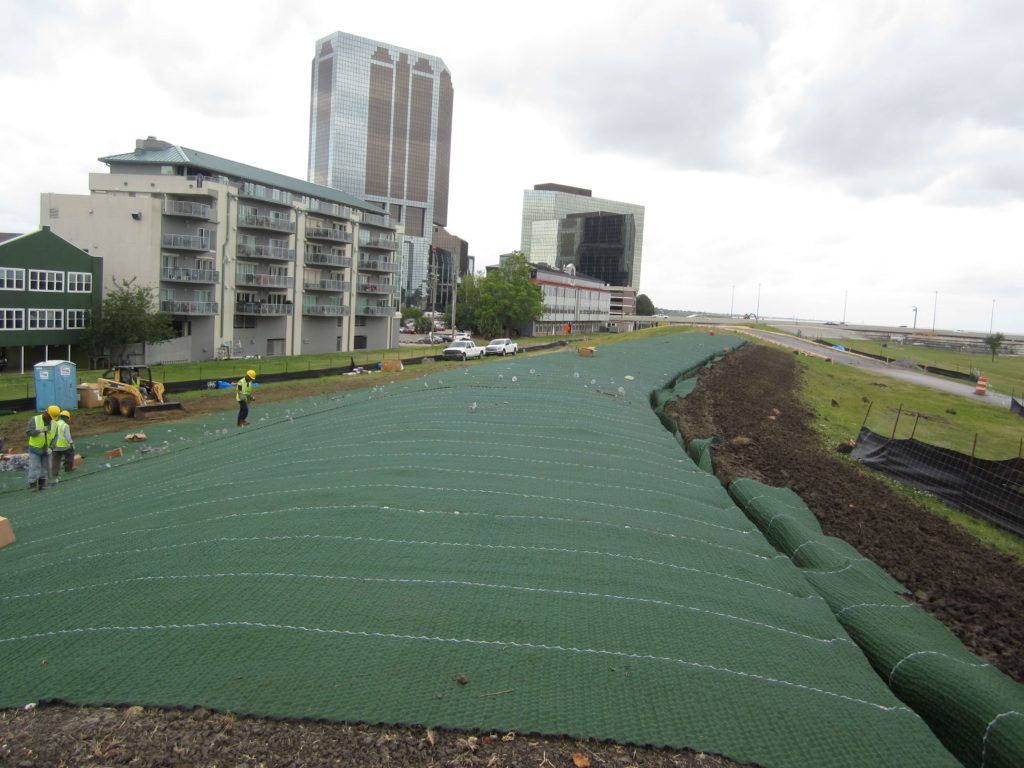
Our products have functional lifespans that ranges from 45-days to years-upon-years; making blankets an ideal solution for everything from roadway construction, mine clean up and reclamation efforts, to stream restoration and new construction of solar and wind farms. Environmentally responsible and innovative, our products include solutions that are biodegradable, photodegradable, or permanent.
Erosion control blankets consist of netting and matrix materials woven together to form soil stabilizing devices that are contoured directly to the landscape to assist in stabilization and germination of natural vegetation.
Erosion control blankets are integral elements of LEED (Leadership in Energy and Environmental Design) and Low Impact Design (LID) principles. Born at the heart of the green solutions, Rolled Erosion Control Products (RECP) and Sediment Retention Fiber Rolls (SRFR) create foundations for sustainable sites and minimizing development’s impact on hydrology. They allow natural processes to take place on a site while protecting downstream impacts by means of infiltration, deceleration and other key processes to protect land and water resources.
About the Clean Water Act
The Clean Water Act, established 1972, creates a basic structure for regulating discharges of pollutants into waters of the United States and regulates quality standards for surface waters. The Clean Water Act (CWA) and its amendments have been updated to reflect the advancements in science, as well as environmental and civil engineering knowledge. In 2002, additional guidelines pertaining to erosion control were added to the CWA.
Under the CWA, the EPA is empowered to implement pollution control programs such as developing national water quality criteria recommendations. The CWA made it unlawful to discharge any pollutant from a point source into navigable waters or manage potential conflicts through a permitting process. States develop policies and permitting practices based on the CWA recommendations regarding storm water and wastewater management.
Typically, sediment runoff rates from construction sites are 10 to 20 times greater than those of agricultural lands and up to 2,000 times greater than those of forest lands. This means it is essential for sites to develop erosion control plans to deploy erosion control devices to physically prevent water quality problems and aid in the establishment of vegetation to protect water quality in the long-term.
The Environmental Protection Agency and state agencies enforce erosion control practices through the Clean Water Act to require major industries and individuals to meet performance standards, ensuring pollution control for both point source and nonpoint pollution controls at varied types of construction sites. This act charges states with setting specific water quality criteria appropriate for their waters and developing pollution controls to meet them.
The Clean Water Act spawned the National Pollutant Discharge Elimination System (NPDES) which requires the development of Stormwater Pollution Prevention Plans (SWPPP) to acquire permit coverage. SWPPP is intended to be applied by construction site operators to manage stormwater discharges from the site.
For additional information on the Clean Water Act: https://www.epa.gov/laws-regulations/summary-clean-water-act
For additional information on developing SWPPP for construction sites: https://www.epa.gov/sites/production/files/2015-10/documents/sw_swppp_guide.pdf
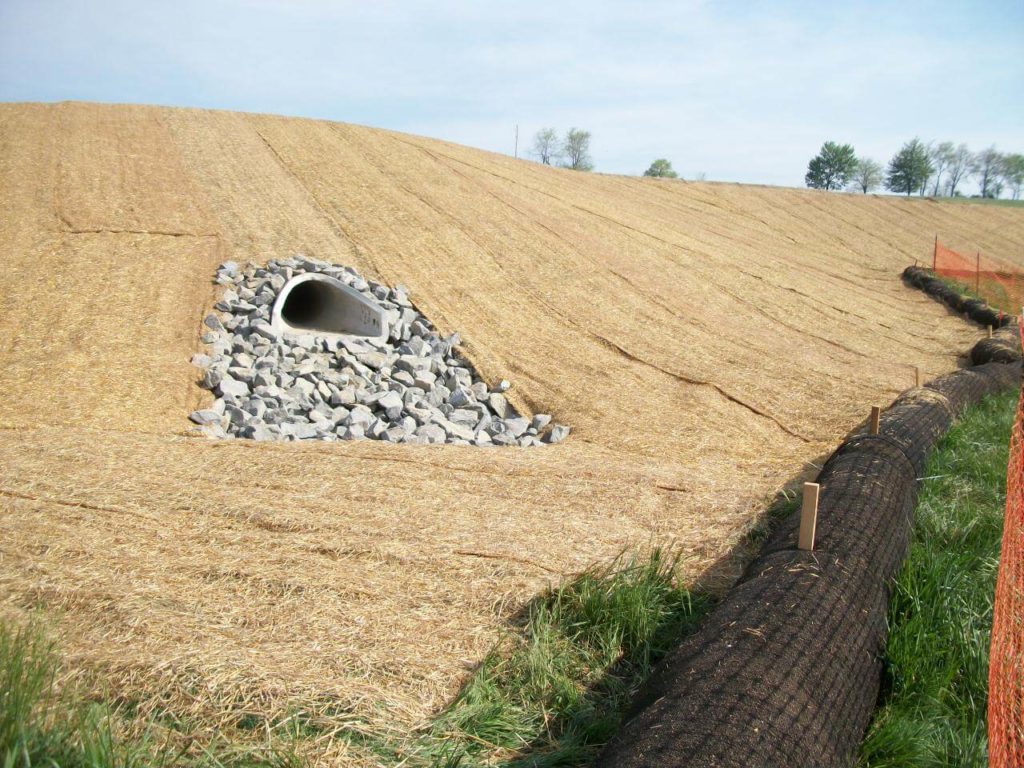
Erosion Control and Infrastructure
Construction projects for infrastructure development and improvement span the country and have never been more important than at this moment. Infrastructure is needed to handle population growth and facilitate economic vitality.
Many of these infrastructure projects are being undertaken by departments of transportation and, as such, DOTs are increasingly setting additional standards and protections to support the CWA and manage construction site operators’ compliance on the jobsite. To ensure compliance, standards are established for the performance of various erosion control products.
The performance of erosion control products are verified via testing by a variety of organizations and methodologies. Organizations include ASTM (American Society for Testing and Materials – D18 Soil & Rock, and D35 Geosynthetics), NTPEP (National Transportation Product Evaluation Program) and other specialized laboratories. Results of erosion control product testing are submitted on a regular basis to DOTs for review. It is based on these performance metrics that engineers identify the most appropriate erosion control and sediment retention devices are best suited for a particular project.
Testing establishes how various erosion control products perform against sustained flow rates, shear stress, hydraulic modeling and overtopping. Performance failures of any kind jeopardize water resources and environments that provide our nation’s drinking water.
Top manufacturers not only navigate the DOT approval processes to gain product approval, but will also readily provide “spec sheets” to engineers and specifiers for each product they manufacture. DOT requirements and specifications vary by state.
Transportation and other infrastructure projects can have a significant impact on water quality and the environment. As such, SWPPP and the Clean Water Act provide grounds for which manufacturing of Rolled Erosion Control Products (RECP) and Sediment Retention Fiber Rolls (SRFRs) is essential.

Further Reading
Guide to Protecting Waterfront Property From Erosion
When shoreline erosion occurs, significant problems arise for the environment and surrounding waterfront properties. Your…
Environmental Benefits of Erosion Control
In many applications like construction, vegetation removal leaves the landscape vulnerable to erosion, which washes…
Essential Today: Erosion Control Blanket Manufacturing
Why Are We Essential Erosion control products are designed to protect drinking water nationwide. Water…
